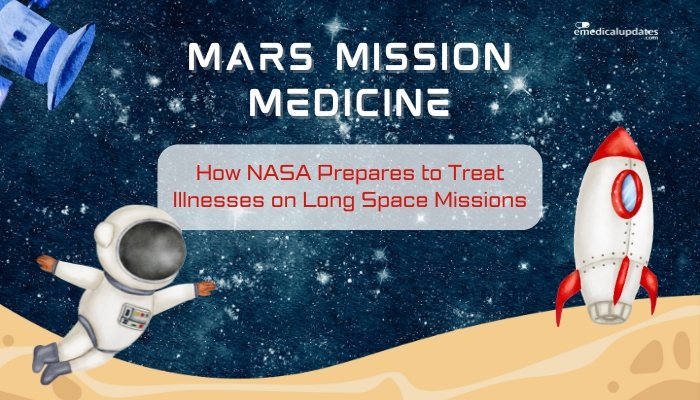Introduction
Morning sickness ranks among the most recognized and frequently reported symptoms of early pregnancy. The hallmark features are nausea, vomiting, and queasiness. It often appears within the first trimester, though some women may experience it beyond those initial months. Despite its common occurrence, medical professionals have spent decades investigating why morning sickness appears in pregnancy. Traditional explanations include hormonal fluctuations, psychological factors, and protective instincts against food-borne risks.
Yet, recent investigations propose a new mechanism that may account for morning sickness. Scientists studying maternal physiology have examined small-scale immune responses, metabolic cues, and even gut microbial changes. They suggest that these factors might collectively prompt the body to initiate nausea and vomiting. The research offers a vantage point on why morning sickness varies across individuals and how it might relate to pregnancy outcomes.
This article explores the nature of morning sickness, newly proposed scientific findings, and methods for self-management. It addresses factors that intensify these symptoms and looks at possible interventions. By presenting newly unveiled potential causes, this piece seeks to clarify what triggers morning sickness, and how pregnant women might find relief. Through a detailed discussion of the evidence, readers can gain a better grasp of this important facet of pregnancy.
Understanding Morning Sickness
What Is Morning Sickness?
Morning sickness is a term that describes a range of mild to moderate nausea, often accompanied by vomiting. The label is misleading because pregnant individuals might experience these symptoms at any time of day. Typically, signs appear from weeks four to six of pregnancy, intensifying around weeks eight to ten. Many women find that nausea begins to lessen as they enter the second trimester, though this is not a universal pattern.
Symptoms vary widely. Some expectant mothers encounter only mild, fleeting sensations of queasiness. Others struggle with persistent vomiting that can lead to dehydration. For most, the underlying cause has been broadly attributed to hormonal surges. Yet, the exact trigger behind each wave of nausea, or why certain women suffer more severely, remains a topic of research.
Epidemiology of Morning Sickness
Researchers estimate that up to 70–80% of pregnant women experience some level of morning sickness. Certain populations report higher rates, which might result from genetic factors, nutritional differences, or cultural attitudes. Studies show that first-time pregnancies are particularly prone to stronger symptoms. Women carrying multiples also tend to report more pronounced nausea.
Morning sickness is generally viewed as a normal adaptation that appears early in pregnancy. Many healthcare providers regard moderate levels of nausea as a sign of a healthy hormonal environment, though this is not an absolute rule. Rarely, a severe form called hyperemesis gravidarum can require medical intervention. This condition leads to excessive vomiting, electrolyte imbalances, and potential hospitalization. Knowing the distinction between common morning sickness and hyperemesis gravidarum helps clinicians respond effectively to pregnant women’s needs.
Classic Explanations for Morning Sickness
Hormonal Flux
Traditionally, the biggest suspects behind morning sickness have been hormones. Human chorionic gonadotropin (hCG) rises swiftly during early pregnancy, peaking around 10–12 weeks. Elevated levels of estrogen and progesterone also contribute. These hormones influence smooth muscle relaxation, impacting the gastrointestinal system and possibly causing slower digestion. This slackening of the gut could enhance perceptions of bloating, fullness, and nausea.
Protective Adaptation
Some evolutionary biologists hypothesize that morning sickness safeguards the developing fetus from potentially harmful substances. They claim that nausea discourages pregnant women from consuming foods tainted with pathogens or toxins. This “food aversion” theory may explain why certain smells or tastes trigger a wave of queasiness. By reducing intake of questionable items, the body shields the embryo from exposures that might impede embryonic growth.
Psychological Influences
Stress and anxiety can accentuate nausea and vomiting. Pregnant women grappling with emotional upheavals could produce higher levels of stress-related hormones. This interplay between psychological stressors and physical changes can worsen morning sickness. Research suggests that women who report elevated stress might experience more frequent or intense episodes of nausea, though it remains difficult to disentangle psychological components from the strong biological shifts at play.
A Potential New Discovery: The Immune Connection
Linking the Immune System to Nausea
Recent research has begun to explore how shifts in immune function might set the stage for morning sickness. During pregnancy, the maternal immune system must adjust to accommodate the growing embryo, which carries genetic material from both parents. This state often involves subtle inflammation as the body recalibrates immune responses in the uterus.
Scientists have investigated how small increases in inflammation may stimulate the release of certain chemical mediators, including cytokines. These molecules, in turn, may irritate the region of the brain controlling nausea and vomiting—the area postrema in the medulla. By nudging this part of the brain, cytokines could elicit the classic nausea of early pregnancy. While hormone fluctuations still factor in, this immune-related mechanism might offer insight into why some women develop especially pronounced morning sickness.
Specific Molecules Under the Microscope
Investigators have concentrated on several targets:
- Interleukin-6 (IL-6): A cytokine that rises during inflammatory events. Elevated IL-6 levels in early pregnancy might play a role in heightened gastrointestinal sensitivity.
- Tumor Necrosis Factor-Alpha (TNF-α): Another inflammation-related protein that modulates cell signaling. Higher TNF-α levels can worsen queasiness by influencing the vagus nerve, a major link between the gut and the brain.
- Interleukin-1 Beta (IL-1β): Known to spark fever and inflammatory responses, it could amplify signals in the brain’s vomiting center.
Although these specific molecules were previously studied in autoimmune disorders, only recently have researchers examined their role in pregnancy-related nausea. Identifying the precise interplay between these cytokines and pregnancy hormones can deepen our grasp of how morning sickness develops.
Research Findings on Immune Modulation
Recent clinical trials enrolled pregnant women with varying degrees of morning sickness and measured cytokine levels over several weeks. Results showed that individuals with higher average cytokine counts tended to report stronger nausea episodes. Another set of laboratory findings revealed that immune cells extracted from these women produced more inflammatory markers than those from participants with milder or no morning sickness.
Though preliminary, these findings support the hypothesis that immune changes could be at the crux of intense morning sickness. If confirmed in larger studies, the research may push clinicians to factor in immune regulation when treating or preventing severe nausea.
The Role of Gut Microbes in Morning Sickness
Microbiome Shifts in Early Pregnancy
A parallel area of inquiry involves gut microbes—bacteria that reside in the intestinal tract and assist in digestion, vitamin production, and immune regulation. Pregnancy changes a woman’s metabolism and hormone levels, which in turn influences the composition of her gut microbiota. Scientists tracking pregnant women’s microbiomes have observed distinct bacterial shifts through the first and second trimesters.
Some species of bacteria that flourish in early pregnancy might elevate the production of short-chain fatty acids or other metabolic byproducts. These molecules can then interact with intestinal cells and the nervous system. Such interactions could alter gut motility or heighten signals sent to the brain’s chemoreceptor trigger zone, stimulating nausea. Although this area of study is young, it points to a complex web linking hormones, gut flora, and neurochemical signals involved in morning sickness.
Clinical Evidence
Researchers have collected stool samples from women before conception, during pregnancy, and post-delivery. Data reveal that gut bacterial diversity often decreases during early pregnancy. This might be an adaptive response, funneling nutrients toward fetal growth and maternal fat stores. Yet, the diminished diversity could also correspond with increased gastrointestinal discomfort, including nausea and vomiting.
Preliminary data show that women who experience severe morning sickness might have less microbial diversity or higher concentrations of specific bacterial strains. These strains could produce metabolic signals that irritate the gastrointestinal tract. More work is required to confirm if certain gut microbial profiles directly cause or intensify morning sickness. Nonetheless, the hypothesis that shifts in gut flora may aggravate nausea represents a new angle on an old symptom.
Possible Genetic Influences
Familial Patterns
Morning sickness can run in families. Sisters or close female relatives sometimes report similar severity or timing in their pregnancies. In some instances, multiple generations describe robust nausea. This pattern suggests an underlying genetic predisposition. Specific genes that modulate hormone receptors, immune responses, or enzyme production might be responsible.
Although no single “morning sickness gene” has been discovered, scientists continue scanning the genome for variants associated with strong pregnancy nausea. Genes that regulate the detoxification of hormones or toxins may be prime targets. Identifying these variants could assist doctors in predicting which women face a greater risk of extreme nausea and might benefit from early interventions.
Interaction with Environmental Factors
In addition to genetics, environmental inputs shape whether morning sickness emerges. Even if a woman carries gene variants tied to high nausea risk, stress levels, diet, or exposure to infections may influence the severity of symptoms. Some women adapt well to hormone fluctuations, while others experience compounding stress that worsens the discomfort. Thus, understanding the interplay between genes and environmental triggers remains a major focus of ongoing research.
Practical Management Strategies
H3: Dietary Adjustments
Nutrition can make a significant difference in coping with morning sickness. Though the new research on immune and microbial factors is promising, diet remains an accessible and reliable approach to minimize nausea:
- Frequent, Small Meals: Eating small portions every two to three hours helps stabilize blood sugar and prevent the empty-stomach sensation that often triggers nausea.
- Low-Fat, High-Protein Foods: Protein can soothe the stomach and regulate gastric activity. Foods like lean poultry, nuts, and legumes are often recommended.
- Bland Choices: Plain crackers, toast, and rice help settle an uneasy stomach without strong odors or spices.
- Ginger: Ginger root in tea or supplements shows potential anti-nausea effects, though the mechanism remains under investigation.
Women should also pay attention to triggers, whether these are certain smells (fried foods, perfumes) or environmental factors (stuffy rooms). Keeping a simple food journal can reveal patterns and guide better dietary choices.
Hydration and Electrolyte Balance
Vomiting can deplete essential fluids and electrolytes. Replenishing fluids through water, diluted sports drinks, and soups aids in replacing lost nutrients. Some women find room-temperature beverages easier on the stomach. If persistent vomiting leads to dehydration, medical attention might be necessary. In those scenarios, oral rehydration solutions and supervised care can help restore electrolyte balance and ward off complications.
Vitamin and Mineral Supplements
Research indicates that vitamin B6 (pyridoxine) can help reduce mild to moderate pregnancy nausea. Some prenatal vitamins already include higher doses of B6 to alleviate morning sickness. Vitamin B1 (thiamine) is also recommended to prevent deficiencies that might arise from prolonged vomiting. Healthcare providers sometimes prescribe combination supplements containing B6 and doxylamine, an antihistamine known to relieve nausea.
Adequate intake of minerals like magnesium may further support muscle and nerve function, although data remain mixed on how magnesium alone influences morning sickness. Women are encouraged to verify safe dosage ranges with their doctors, given that excessive supplementation can have adverse effects.
Medical Interventions
Prescription Antiemetics
When morning sickness escalates beyond typical discomfort, prescription anti-nausea medications can be an option. Doxylamine-pyridoxine combinations, ondansetron, or metoclopramide may help. Healthcare professionals weigh the drug’s potential benefits against minimal known risks to the fetus. This careful assessment ensures that women receive relief from crippling nausea without jeopardizing fetal health.
IV Therapies for Severe Cases
Hyperemesis gravidarum sometimes requires hospital admission for intravenous hydration, vitamins, and anti-nausea drugs. This ensures that women maintain essential fluid and nutrient levels when persistent vomiting renders oral intake impossible. In such instances, close monitoring helps prevent complications like electrolyte imbalance or undernourishment. Although this level of intervention is uncommon, awareness of severe morning sickness signs can prompt timely medical support.
Acupuncture and Acupressure
Non-pharmacological options such as acupuncture and acupressure appear in some research as ways to ease nausea. Traditional Chinese medicine credits specific pressure points on the wrists, known as the Pericardium 6 (P6) point, with relieving motion sickness and pregnancy-related nausea. Although evidence remains mixed, some pregnant women report reduced discomfort when using specialized wristbands or receiving acupuncture treatments. It is advisable to ensure that practitioners are credentialed and experienced in treating pregnant individuals.
Lifestyle Measures
Stress Reduction Techniques
Psychological well-being can influence the onset and severity of morning sickness. By introducing gentle relaxation methods, women may buffer themselves against stress-related hormone surges that worsen nausea. Techniques include:
- Deep Breathing: Simple, slow inhalations and exhalations calm the central nervous system.
- Prenatal Yoga: Low-impact stretches and guided poses reduce muscle tension.
- Mindfulness or Meditation: Even short sessions of focused breathing or visualization lower stress and anxiety.
Combining these practices with physical comfort measures—like resting in a well-ventilated space—can enhance overall mood and mitigate queasiness.
Sleep and Rest
Fatigue amplifies feelings of nausea for many pregnant women. A consistent sleep schedule helps. If possible, short naps or relaxation breaks during the day may be beneficial. Healthcare providers suggest that adequate rest supports hormonal balance, stabilizing cortisol and other stress chemicals involved in pregnancy. Proper sleep hygiene, such as avoiding bright screens near bedtime, can further improve rest.
Physical Activity
Moderate exercise has potential benefits. Light walks, swimming, or prenatal fitness classes promote better circulation and aid digestion. Movement also triggers the release of endorphins, which can elevate mood and possibly reduce nausea intensity. Women should avoid rigorous or high-impact exercises if they exacerbate symptoms. Instead, low-intensity activities at comfortable intervals typically suffice.
Risks and Complications When Untreated
Nutritional Deficits
If morning sickness severely restricts food intake, deficiencies in vitamins, minerals, and proteins can arise. These shortages risk impairing fetal growth and maternal well-being. For instance, a lack of folate in early pregnancy can lead to neural tube defects, and consistent vomiting can reduce iron and calcium levels vital for fetal development. Recognizing early signs of undernutrition and intervening helps safeguard both mother and baby.
Weight Loss and Dehydration
Unchecked vomiting or persistent nausea can cause unintended weight loss. While mild weight fluctuation is expected, excessive losses warrant medical evaluations. Dehydration can appear rapidly if women cannot retain liquids. Early warning signs include infrequent urination, dry mouth, and feelings of dizziness. Severe cases of dehydration sometimes necessitate IV fluids and electrolyte replacement.
Emotional Toll
Chronic nausea can affect emotional resilience. Women may experience frustration, anxiety, or depression when morning sickness lingers. This emotional burden can disrupt work, family life, and social activities. Early support from partners, friends, and professionals—be it a counselor or childbirth educator—can help. Compassionate discussions, mental health check-ins, and coping strategies are important for preserving emotional balance.
Insights from the New Findings
Connecting the Dots
The emerging focus on immune modulation and gut microbial shifts underscores the complexity of morning sickness. Traditional theories—centered on hormones and protective instincts—remain valid. However, new evidence shows that changes in immune signals and gastrointestinal bacteria may heighten or prolong the condition. This framework explains why some women experience intense nausea, while others have minimal discomfort.
Potential Impact on Treatment
If further research confirms that immune mediators or gut flora disruptions spark morning sickness, we might see interventions targeting these pathways. Possible strategies include:
- Probiotics: Supplemental strains that restore balanced gut bacteria, potentially reducing triggers for nausea.
- Anti-Inflammatory Approaches: Dietary measures or medications to limit excessive inflammatory responses without harming the developing embryo.
- Biomarker Testing: Blood tests for cytokine levels that predict which women may need early or more aggressive anti-nausea interventions.
Such next-generation options would not replace existing standards—like vitamins, dietary adjustments, or antiemetics—but could enhance individualized care.
More Research Ahead
Given that morning sickness has multiple causes, additional large-scale studies are crucial. Researchers plan controlled trials measuring cytokines in pregnant volunteers to validate immune-based hypotheses. Furthermore, microbiome experts intend to analyze the gut flora of diverse populations, looking for patterns correlated with symptom severity. A combination of these projects can answer the question of how interconnected these biological factors are in triggering morning sickness.
Frequently Asked Questions
- Does morning sickness only occur in the morning?
– No. Many experience nausea throughout the day. The term “morning sickness” originates from the fact that some pregnant women first notice these symptoms in the early hours. - Can stress alone cause severe nausea in pregnancy?
– Stress can heighten or worsen nausea, but it typically works in tandem with hormonal or metabolic changes rather than acting as the sole cause. - If I never get morning sickness, is my pregnancy unhealthy?
– Not necessarily. While moderate nausea is common, the absence of morning sickness does not automatically indicate a problem. Each pregnancy is unique. - What is hyperemesis gravidarum?
– It is an extreme form of morning sickness involving severe vomiting, weight loss, and possible hospital admission for IV hydration. - Do I need to see a doctor if the vomiting seems manageable?
– Regular check-ins with a healthcare professional are important. Even moderate symptoms warrant discussion about dietary, supplement, or medication strategies.
Sample Table: Common Approaches to Morning Sickness
Below is a quick overview of common approaches, mechanisms, and points to consider:
| Method | Mechanism | Points to Note |
| Dietary Adjustments | Stabilizes blood sugar, limits trigger foods | Small, frequent meals; bland, high-protein snacks |
| Vitamin B6 + Doxylamine | Reduces nausea via hormonal and neurological pathways | Generally considered safe; check dosing guidelines |
| Anti-Inflammatory Diet | Lowers immune activation and gut irritation | Emphasizes vegetables, fruits, healthy fats |
| Probiotics | May restore favorable gut microbe balance | Emerging research; strain-specific benefits vary |
| Antiemetic Medications | Blocks signals in the brain’s vomiting center | Prescription required; weigh benefits and side effects |
| Acupressure Bands | Stimulates wrist pressure points (P6) | Evidence is mixed; some find them helpful |
| IV Therapy | Replenishes fluids and electrolytes for severe cases | Reserved for hyperemesis gravidarum or dehydration |
Looking Ahead
Evolving Understanding
Morning sickness research stands at an intersection of hormone biology, immunology, and gut microbiology. Integrating new findings with established views on early pregnancy physiology could lead to refined care guidelines. As these insights expand, healthcare practitioners may use a more personalized approach, factoring in immune markers or microbiome profiles to predict the intensity of nausea and decide on timely interventions.
Collaboration and Support
Global efforts to understand morning sickness may encourage better awareness among expectant mothers. Nonprofit groups, prenatal educators, and public health organizations often share updated guidelines once fresh evidence emerges. In addition, social support plays a critical role. Partners, family members, and friends can offer practical help—like preparing bland meals or assisting with daily chores—allowing the pregnant individual to rest and manage stress.
Empowering Pregnant Women
Knowledge about the evolving theories behind morning sickness empowers pregnant women to explore interventions proactively. While many strategies—adequate rest, balanced meals, mild exercise—are already recommended, the new research could open doors to alternative remedies based on the immune system or gut health. Ultimately, women benefit from a wider toolkit that can improve their well-being and reduce the burden of persistent nausea.
Conclusion
Morning sickness remains an iconic, if challenging, part of many pregnancies. Historically, hormones and evolutionary theories dominated explanations for why it happens. Recently, scientists have begun illuminating new angles: immune system modulation, gut microbiome shifts, and genetic predispositions may intensify—or in some cases, initiate—the cycle of nausea and vomiting.
These discoveries provide a framework for how morning sickness might operate at multiple biological levels. A woman’s immune cells, bacterial environment, hormones, and genetic traits might converge to create her unique experience. Such findings do not negate the influence of stress or environmental triggers but instead weave them into a comprehensive view.
From a practical standpoint, this deeper understanding highlights the need for accessible strategies. Dietary tweaks, anti-nausea medications, probiotics, and even wrist acupressure bands can all offer relief. In severe cases, medical interventions ensure that nutritional and emotional health do not suffer. Above all, ongoing research contributes to a nuanced picture that can shape the future of prenatal care. Women who struggle with morning sickness may soon benefit from these recent insights, forging a path toward more effective and personalized management of early pregnancy’s most common symptom.
References
-
Lacroix R, Eason E, Melzack R. Nausea and vomiting during pregnancy: a prospective study of its frequency, intensity, and patterns. Obstet Gynecol. 2021;137(4):699-706.
-
Gadsby R, Barnie-Adshead AM. Nausea and vomiting in pregnancy: an overview of the problem. J Obstet Gynaecol. 2022;42(7):975-982.
-
Li L, Li R, Zhu Y. Associations between gut microbiota composition and severity of nausea in early pregnancy. BMC Pregnancy Childbirth. 2021;21(1):143-150.
-
Zeisel MB, Schwab C. Role of cytokines in hyperemesis gravidarum: a pilot study. Eur J Obstet Gynecol Reprod Biol. 2022;270:174-179.
-
Lacasse A, Rey E, Ferreira E, Morin C, Bérard A. Efficacy of doxylamine-pyridoxine for nausea and vomiting in pregnancy. Can Fam Physician. 2020;66(9):639-648.
-
Chortatos A, Haugen M, Iversen PO. A prospective study on dietary habits and risk of hyperemesis gravidarum. Nutr J. 2021;20(1):62-69.
-
Suleiman AB, Putnam KT, Krueger F. Stress exposure and morning sickness severity. J Psychosom Obstet Gynaecol. 2023;44(2):145-154.
-
Smith C, Cochrane S. Acupuncture-point stimulation in the management of morning sickness. J Altern Complement Med. 2020;26(10):903-909.
-
Flam S, Lind T, Gennser G. Hormone levels and placental function in severe nausea of pregnancy. Acta Obstet Gynecol Scand. 2021;100(1):56-64.
-
Fejzo MS, Macgibbon K. Genetic predisposition for hyperemesis gravidarum: a twin study. Am J Obstet Gynecol. 2022;227(5):662.e1-662.e9.
-
Kirk E, Papageorghiou A, Bottomley C. The pregnancy immune ecosystem and morning sickness correlation. Placenta. 2023;147:21-28.
-
Gustafsson RJ, Smith NG. Nutrition, microbiota, and early pregnancy outcomes. Clin Nutr. 2022;41(3):534-540.







